I hope your new year is off to a good start, and that means off to a good start photographically as well. Here are a few tips for an annual photography maintenance program:
Every photographer’s workflow should include taking care of certain things each January. Here’s my list:
- First, I go through and clean up my collection of images from the previous year. I use a folder and date-based system, so on my image hard drive right now there’s a folder with the title “2019.” Inside that folder are two folders. The first is “2019 All,” which has a folder for every day I took pictures that year, with the photos from that day in that folder. Each day’s folder has a name that’s eight digits. For instance the last day I shot photos in 2019 was December 31, so it’s title is “20191231.” And inside that are all the photos I took of our dogs that day, in a folder named “Dogs,” with their filenames renamed to “20191231_Dogs_001…”
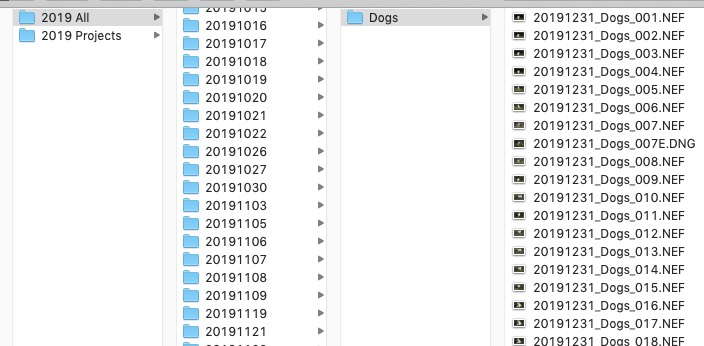
Part of a good workflow is having a regular way of doing thing, like folder and file renaming.
- The second folder is titled “2019 Projects.” That has folders with all of the images I did anything with that year: from web galleries to blog entries to finished images from assignments.
- After that I take a bare hard drive (no case or power supply) that I’ve been using all year to backup those two 2019 folders (along with my Business folder and Mylio) and update it from the primary image hard drive. I then put that now finished 2019 drive in an antistatic box, and that goes into a Pelican case in my basement storeroom. It becomes my master backup, and joins hard drives from previous years.
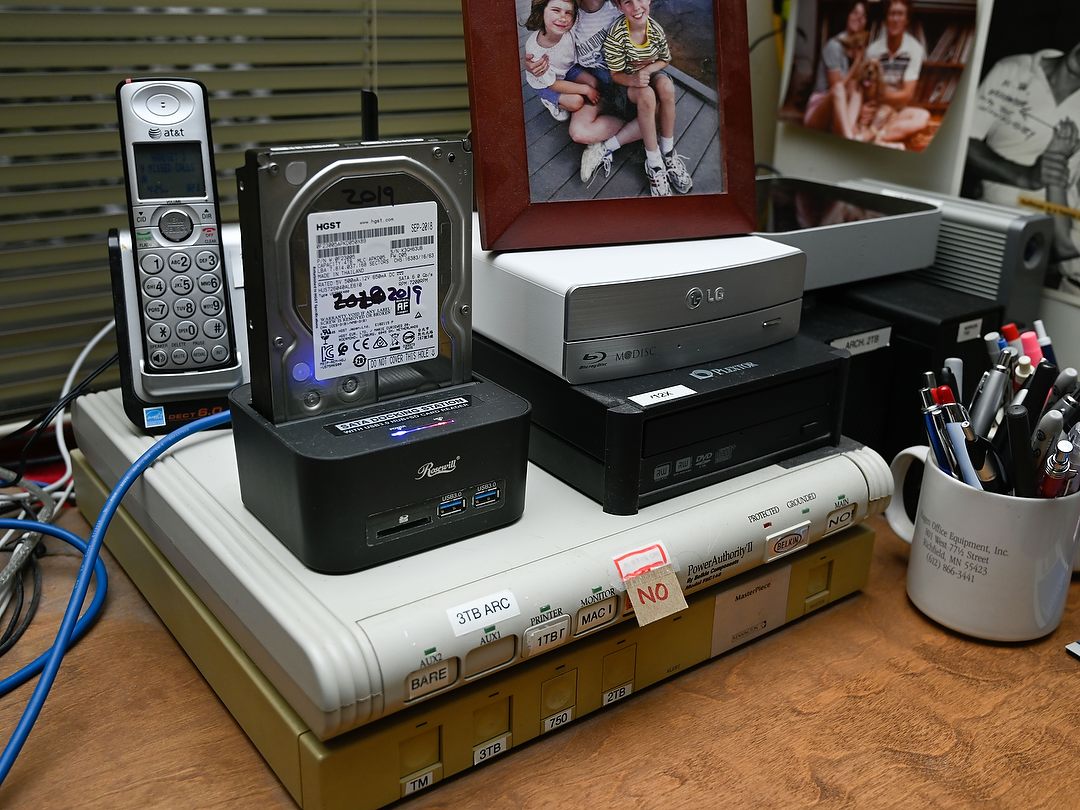
Here’s my 4TB HGST bare hard drive, in a Rosewill external power supply. Since it’s going to spend most of its life in storage, there’s no need to spend extra money on a case and separate power supply.
- The next step is to create that same folder structure (now for 2020) on the main image hard drive (which is a 3TB mirrored drive connected directly to my computer). Then I take a brand new bare drive I’ve just bought, name it 2020, and use it to start backing up everything from this new year.
- This isn’t critical, but for added peace of mind I archive all of my email onto that 2019 hard drive going into storage, just in case.
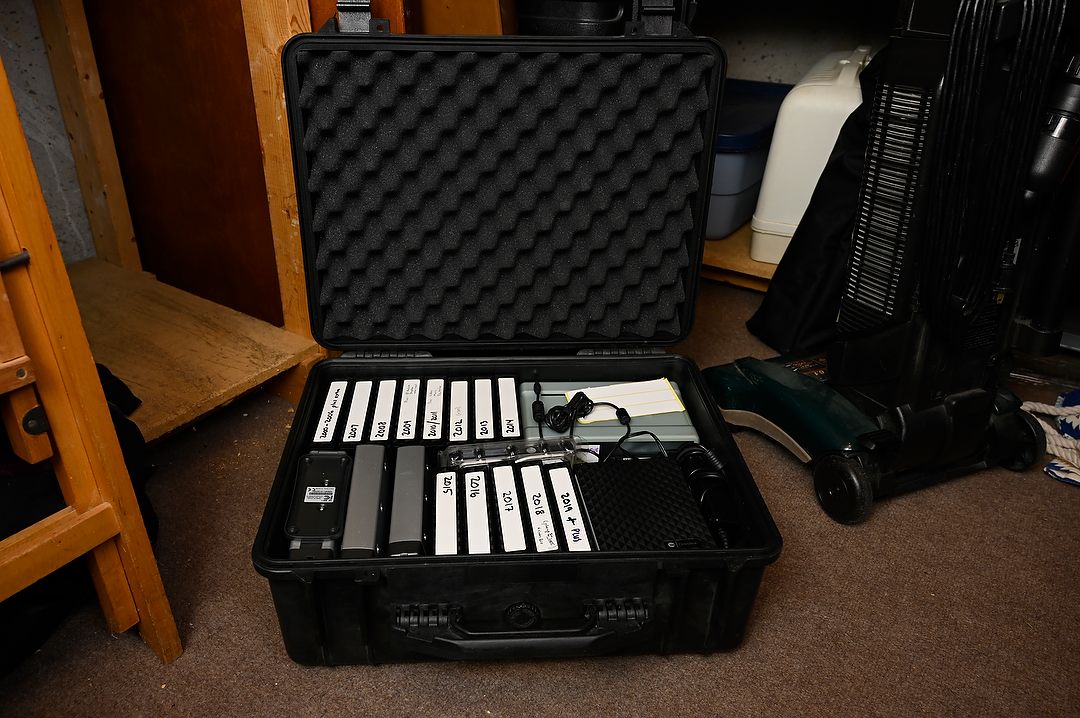
This Pelican case in my basement has every image I’ve shot and kept since 2000, and all of the best images I’ve shot over the course of my career. There’s over a dozen bare drives in here, stored inside antistatic boxes.
At this point I have a hard drive with everything from 2019 on it (images, business docs and email), stored away. My “Best of” collections are constantly maintained through Mylio, which automatically backs up originals of everything to multiple drives and the cloud service I use (Amazon). And although I’m archiving my business material from 2019 onto the hard drive, I also use Dropbox to maintain an online backup of my business, as well as synchronize that across my two computers.
When people ask me how many copies they should have, what their backup strategy should be, my answer is, “whatever it takes for you to be able to sleep well at night.” For me, that means hard drive backups at home, two hard drives that alternate in and out of a safe-deposit box, and finally cloud backup (via Mylio and Amazon for my photos, and Dropbox for my business).
The last step I take is with the cameras. There are two things I check with all of them:
- I confirm the time zone, time and date on each one is up to date. Making sure all of my cameras are in sync means that my images sort in exactly the order I shoot them, and, I know eactly when I did shoot them. I use the website TimeIs for that.
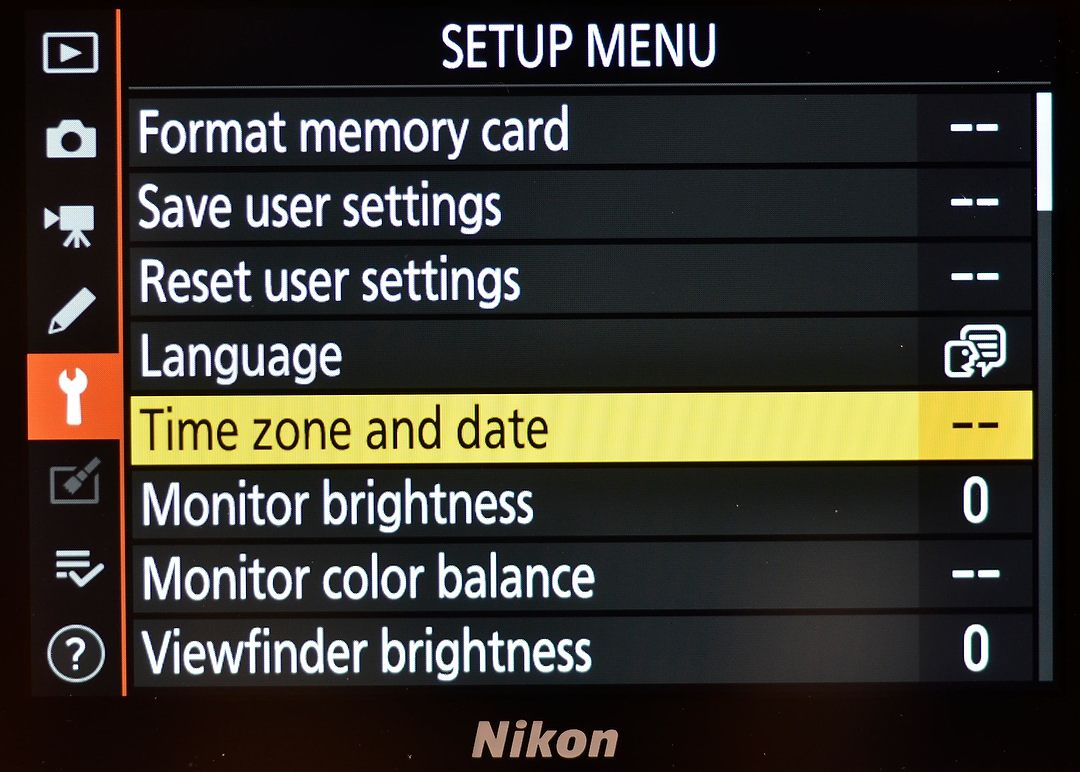
Every January I check the accuracy of time and date, as well as the version of firmware on all of my cameras.
- Then I go to the menus which allow me to add my name and copyright into the EXIF data of every picture, and make sure they’re correct and don’t need to be changed (in case I used a date).
- At the same time I check to make sure each camera is up-to-date with firmware, so I’m getting the best performance each one can give me.
- And finally, this is a good chance to give your cameras and lenses (and perhaps other gear?) a good cleaning. Wiping down the bodies, blowing off sensors (maybe getting them professionally cleaned?) and cleaning your lenses and filters are all good steps to take.
That’s it! Good workflow is more than just editing. It also means staying on top of your cameras and other gear. For your images, you need to think long-term. You need a system that both makes sense to you and allows you to not just find photos easily, but be confident you’ll still have them years from now. And for your cameras, keeping them clean, functional and up-to-date will mean less chance of problems when you’re out making pictures.
(If you like this story, please share it with your friends and let them know about the links on photography that I post on my business Facebook page. I’m also on Instagram and Twitter, @reedhoffmann. And if you’re curious about the workshops I teach, you can find them here.)

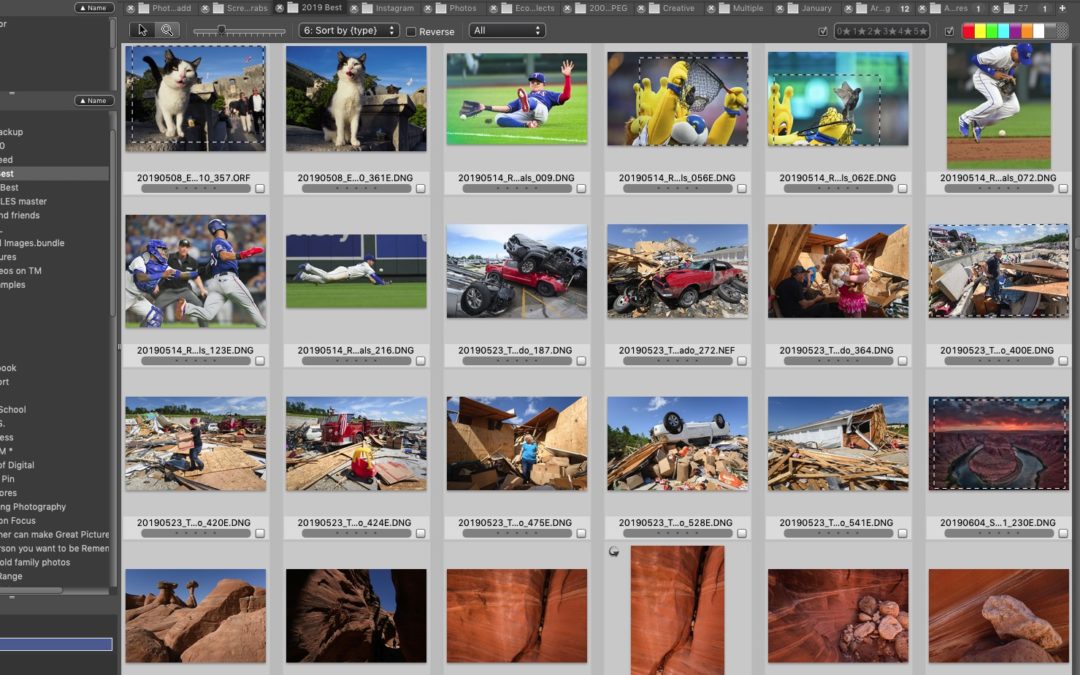
Thanks… Great tips Reed on electronic storage…
A quick query: do you keep any printed copies of your best work (for future scanning) ? Why do I ask? In the event electronic systems evolve to prevent access with current software. (I still fret over my collection of 8 Track tapes! & also I had to get special software to read images I had on a 90’s era Kodak CD)
…Finally, about 10 years ago I attended a photo conference where an Adobe `evangelist ‘ was speaking…when someone (not me!) asked him about a fool proof way to preserve past images-he said—and I’m not kidding—print them and get a nice shoebox…I guess that’s why wedding albums are still being used.
…Always appreciate your tips!
The short answer, Norm, is no. I don’t keep prints of my favorite photos. I do print some, because I think that having and viewing a print is different from on screen, but not as a regular thing and not as a backup strategy. I do try to keep up with changing technology for storage, which is why I moved from CDs to DVDs to Blu Ray, and occasionally migrate photos from old storage to newer. That’s also a key reason why cloud storage is part of my overall archiving plan, so someone else is in charge of migrating at least one set of my images. I don’t disagree that printing is still a viable way to preserve at least some of your images, it’s just not part of my plan.